Here is a guide to Piran’s cultural attractions that you shouldn’t miss.
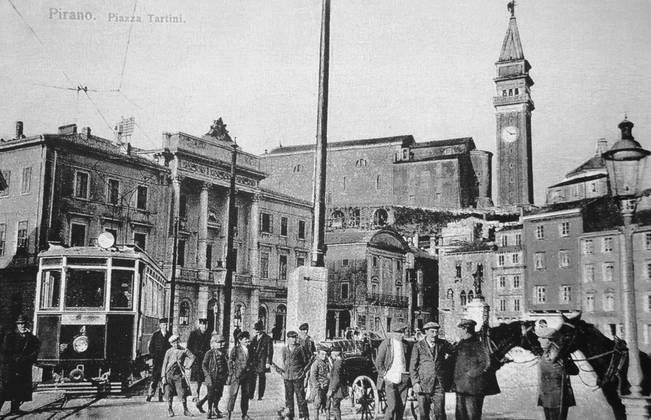
Tartini Square
Tartini Square, named after the world-renowned violinist and composer Giuseppe Tartini (1692–1770), was once a small fishing harbor. The square’s elliptical shape dates back to the period between 1912 and 1953, when a tram line connected Piran with Portorož and Lucija. At that time, the square served as a turning point for the tram.
For such a small coastal town, Tartini Square is quite spacious and has a distinctly Venetian character, while also offering picturesque views of the Adriatic Sea. In the center of the square stands a bronze statue of Tartini, and around it are cozy restaurants, charming cafés, and shops selling local products. The narrow Venetian-Gothic streets add to its unique appeal.
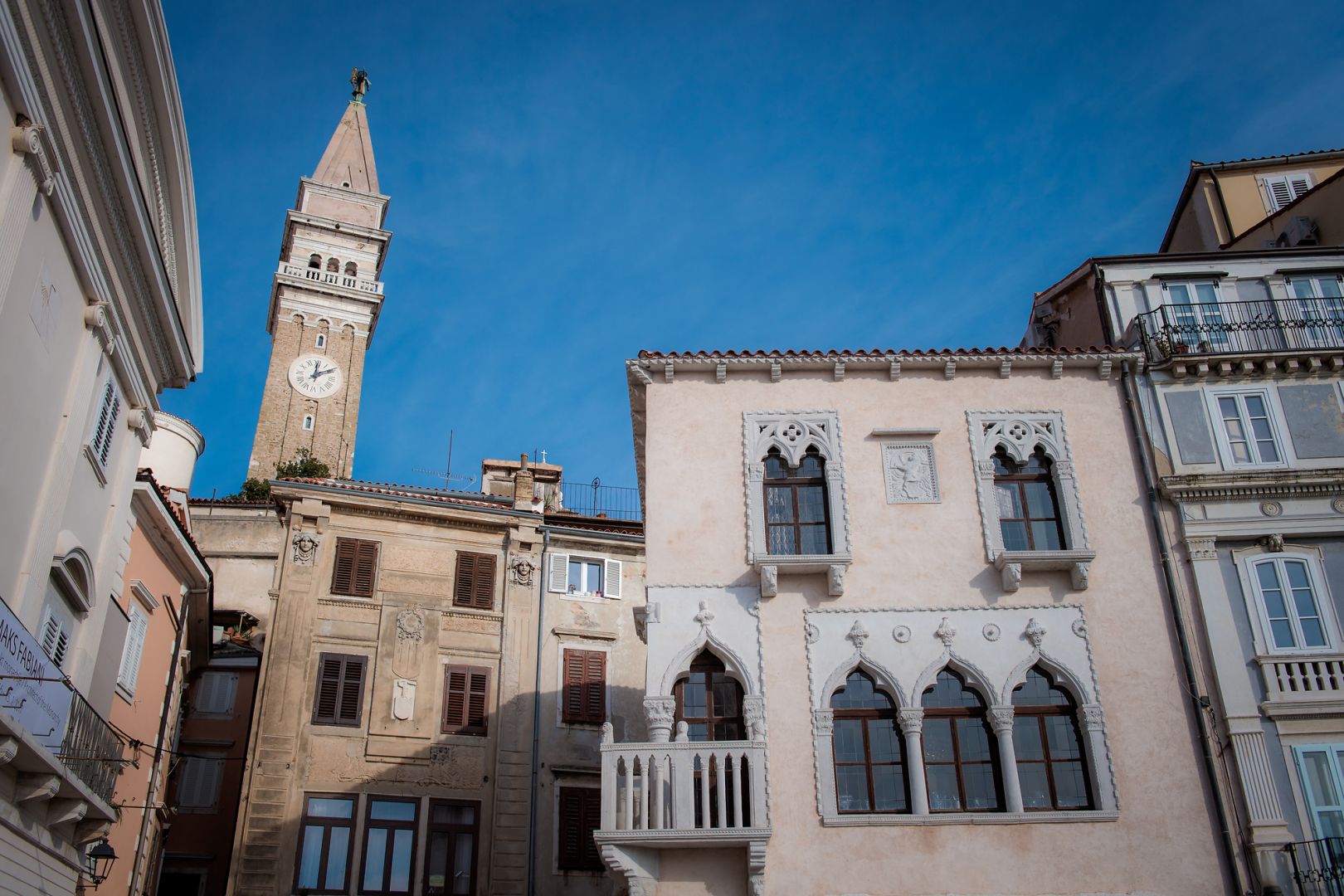
Venetian house
The Venetian House stands on Tartini Square and is an important architectural monument reflecting the Venetian influence in the town. Built in the mid-15th century in the Venetian-Gothic style, it features a distinctive corner balcony and a stone plaque with a lion and the inscription “Lassa pur dir” (“Let them talk”).
According to local oral tradition, a legend has been preserved in Piran regarding this inscription:
Long ago, when Piran was part of the great Venetian Republic and maritime trade between European lands and the Orient was flourishing, many wealthy merchants walked the streets of Piran. They conducted business in the town’s harbor, waited for their goods to be unloaded, and got to know the townspeople in the meantime. One day, a wealthy Venetian merchant fell in love with a beautiful young woman from Piran. He frequently visited the town, brought her valuable gifts, and eventually decided to build her a beautiful house by the harbor, right next to the town Loggia. He wanted to prove the strength of his love to his beloved, and to show the townspeople how wealthy he was and how little he cared about their gossip. The envious citizens gossiped about the couple, and their jealousy grew so intense after the construction of the magnificent house that the couple devised the inscription to defend themselves. It remains on the façade to this day: “Lassa pur dir.”
Today, the house hosts a shop that offers products made with Piran salt, including various soaps and cosmetics enriched with natural ingredients from the Sečovlje Salina Nature Park.
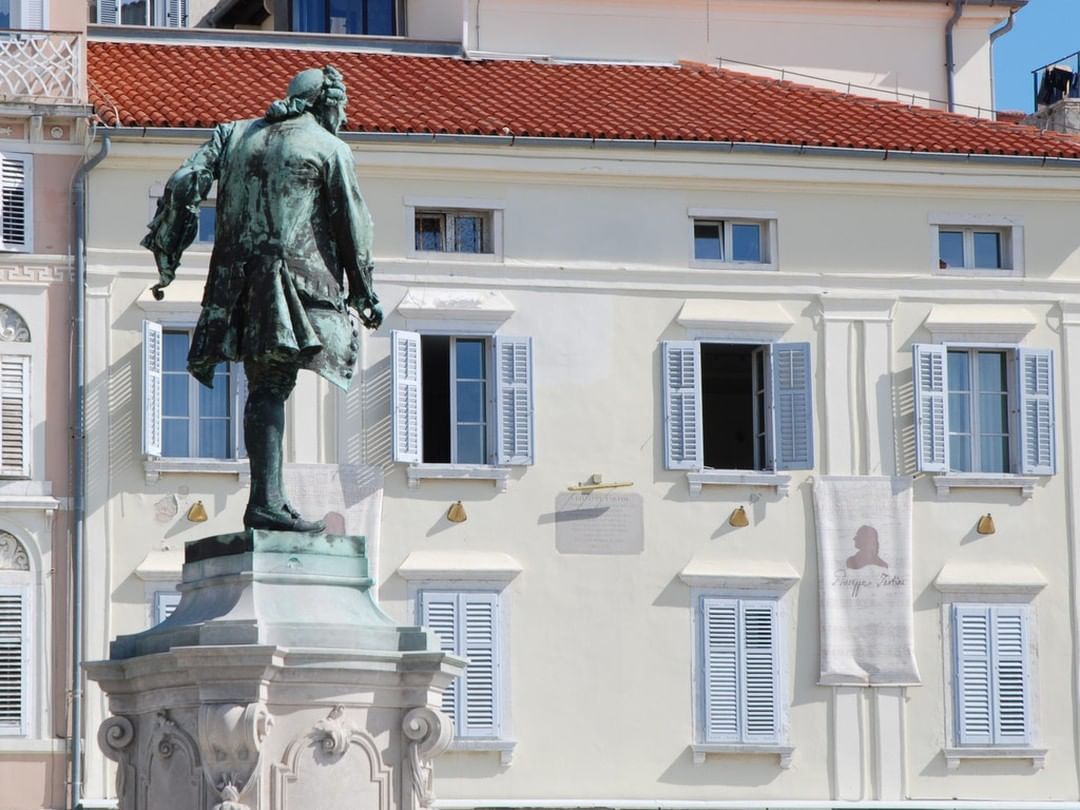
Tartini House
This is one of the oldest buildings in Piran. Its architecture and interior reflect various changes from the late 17th century to the late 19th century.
The house now serves as the headquarters of the Italian community and functions as a venue for cultural projects, a gallery, and a museum. The museum displays various items, including Tartini’s violin, a copper engraving depicting his dream, his portrait, and other artifacts.
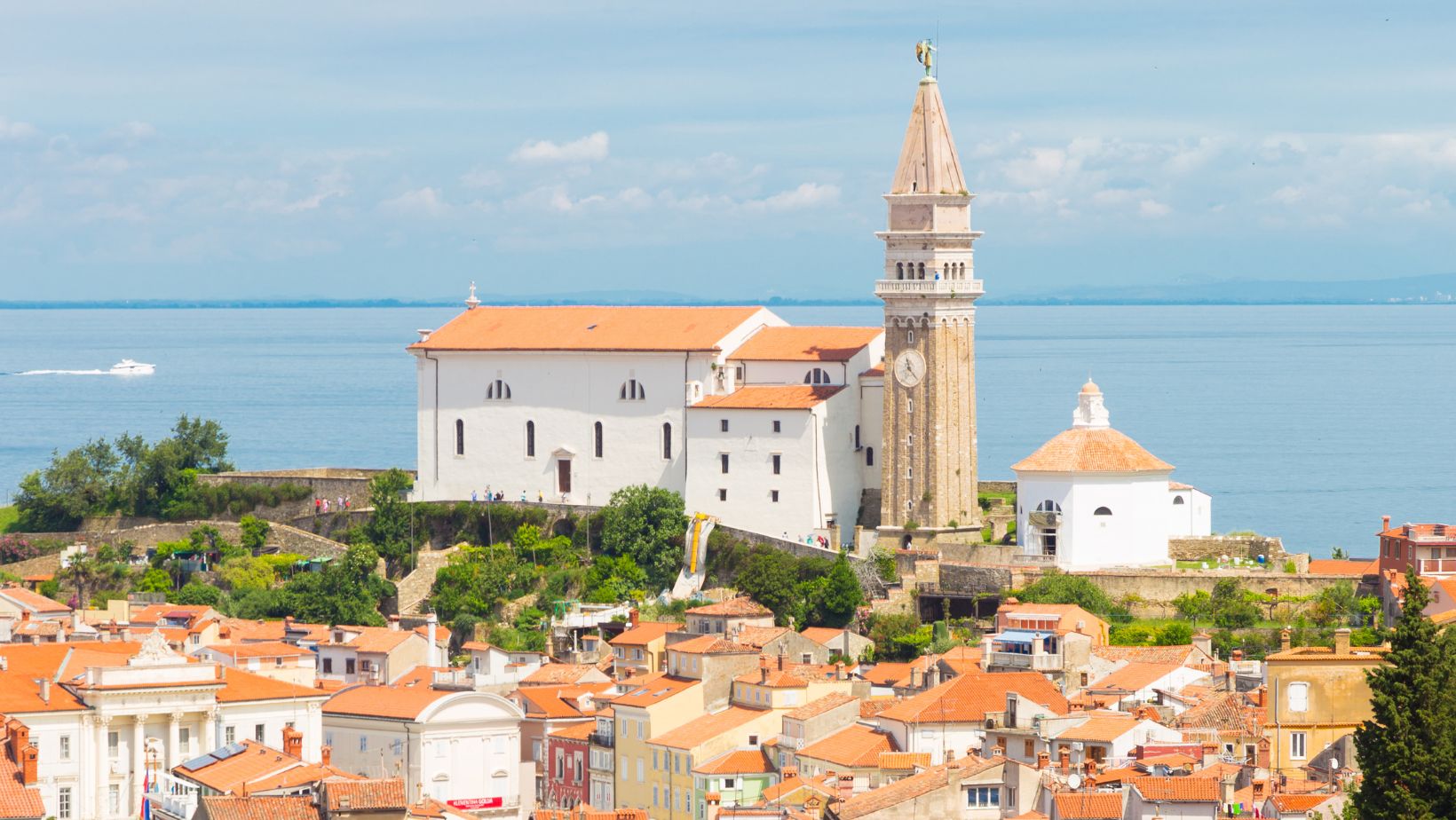
St George’s Church
From St. George’s Church, there is a stunning view of Croatia, Italy, and Slovenia. The church is named after Saint George, the patron saint of the town, who, according to legend, saved Piran from a fierce storm. It is the largest church in Piran. In front of the church entrance lies a large lawn, which once served as a cemetery and is now a popular spot for tourists to enjoy panoramic views of the Gulf of Trieste, Piran, and nearby coastal towns.
Inside, visitors can admire the organ, two statues of St. George, a richly decorated wooden coffered ceiling, and wall paintings of the Venetian school. Notable highlights include Slovenia’s largest oil painting on canvas, “The Martyrdom of St. George” by Giovanni Pagliarini (1841), and the oldest wooden model of a church in the country, dating back to the late 16th century. The church also houses Slovenia’s oldest continuous collection of baptismal records, starting from the early 16th century.
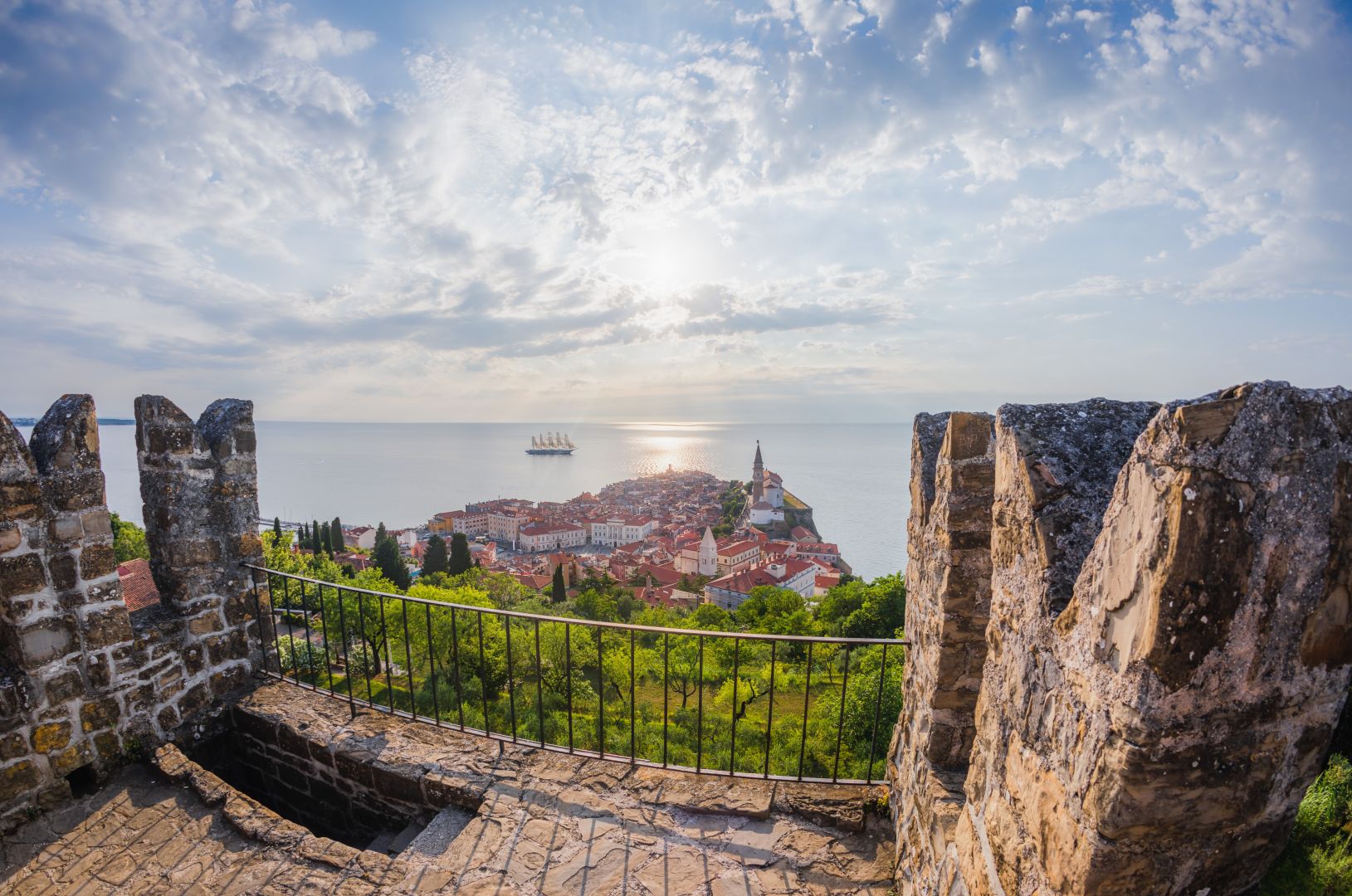
City Walls Piran
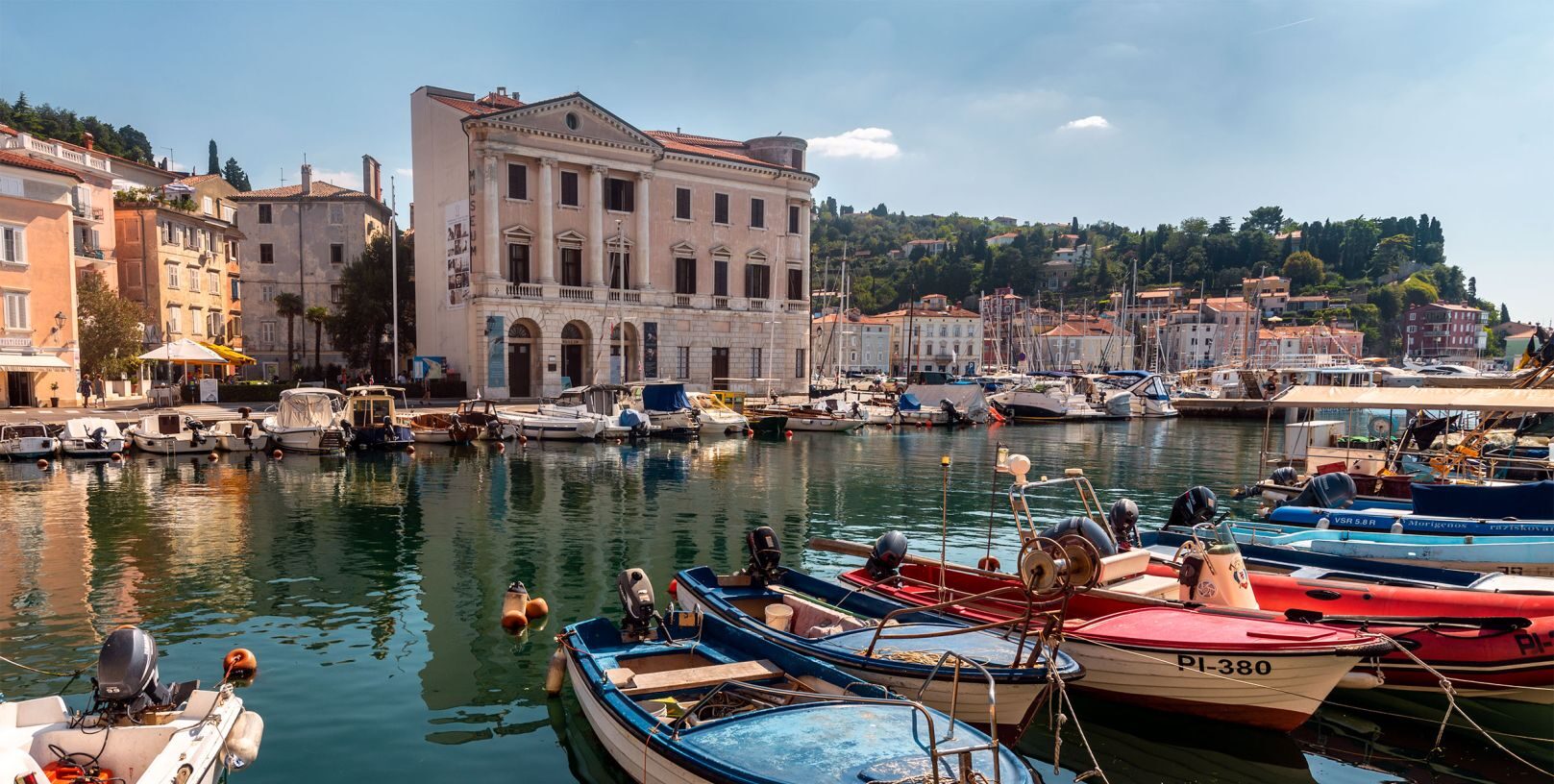
Maritime Museum
The Sergej Mašera Maritime Museum, located in the mid-19th-century Gabrielli Palace by the Piran harbor, showcases Slovenia’s maritime heritage. Its collections include maritime archaeology, ethnological fishing, and the history of maritime enterprises from the Middle Ages to World War II.
In addition, the museum hosts a variety of exhibitions, which you can view here.
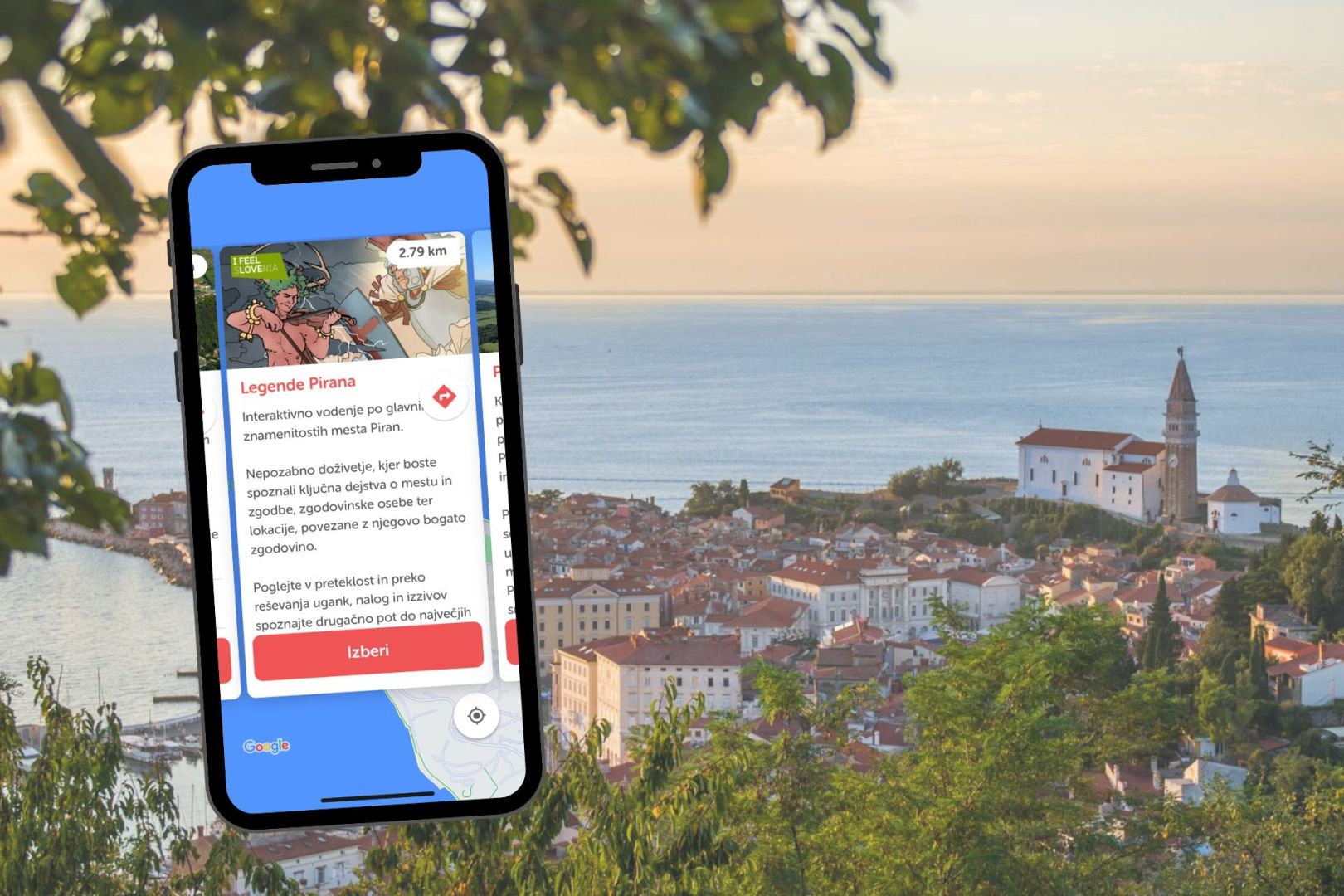
"Legends of Piran" Free Mobile App
If you complete all the challenges, a small reward awaits you at the Tourist Information Center (TIC) in Piran as a token of appreciation for your effort and gained knowledge.
The free mobile app will guide you through Piran’s key landmarks. Through active exploration, you can meet historical figures, solve puzzles, unlock virtual souvenirs and 3D artifacts, and use augmented reality to take a glimpse into the past. There are six challenges or tasks to complete: Devilish Tartini, Evil Tongues, Piran Shield, Fire and Water, Gates Through Time, and Heart of Piran. This way, you can combine an active holiday experience with a peaceful, guided discovery of the natural and cultural heritage of this coastal town.
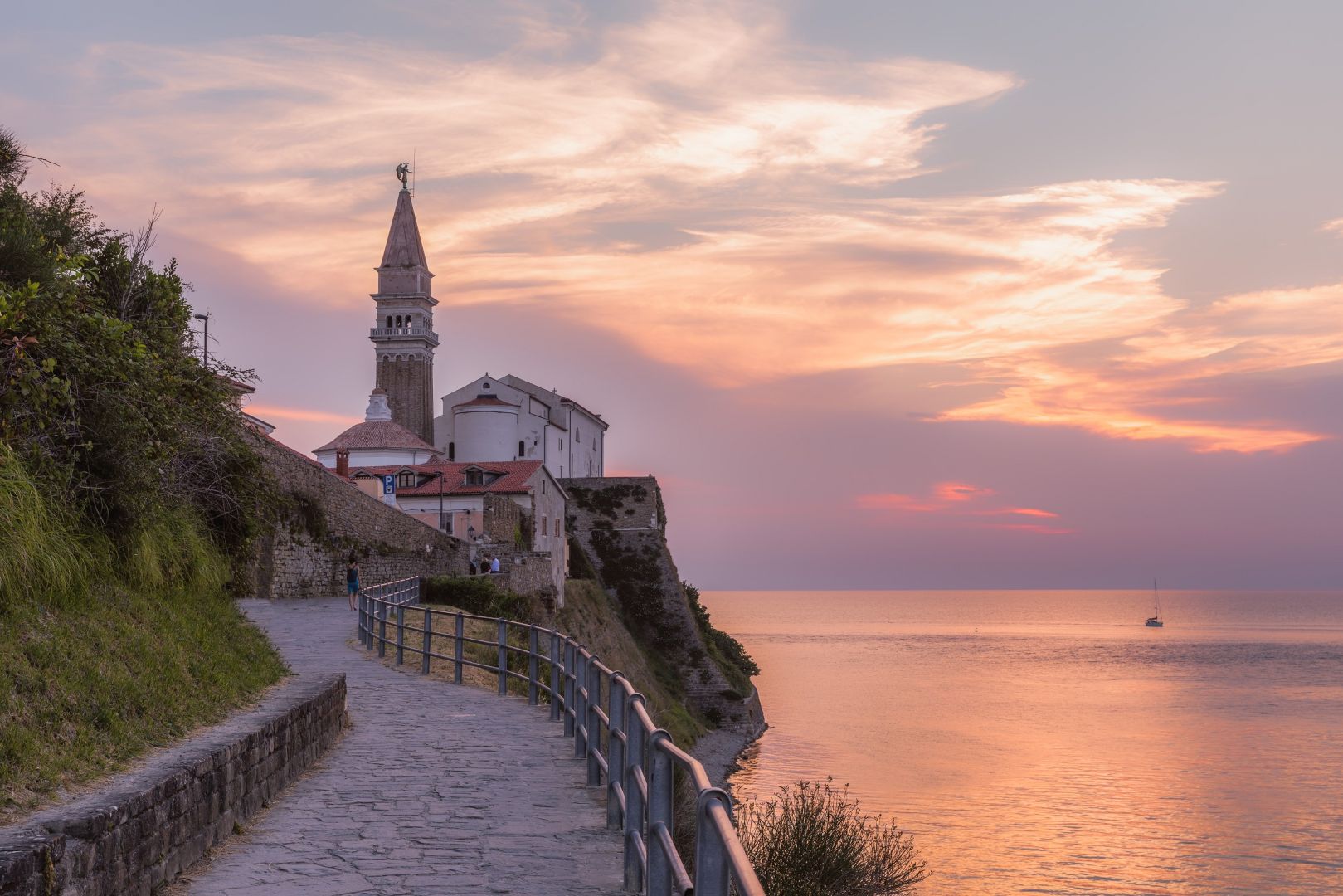
Cultural Treasures of Piran
Uncover Piran’s vibrant cultural heritage, from intricately designed religious monuments to the ancient tradition of salt production and historic coastal promenades.
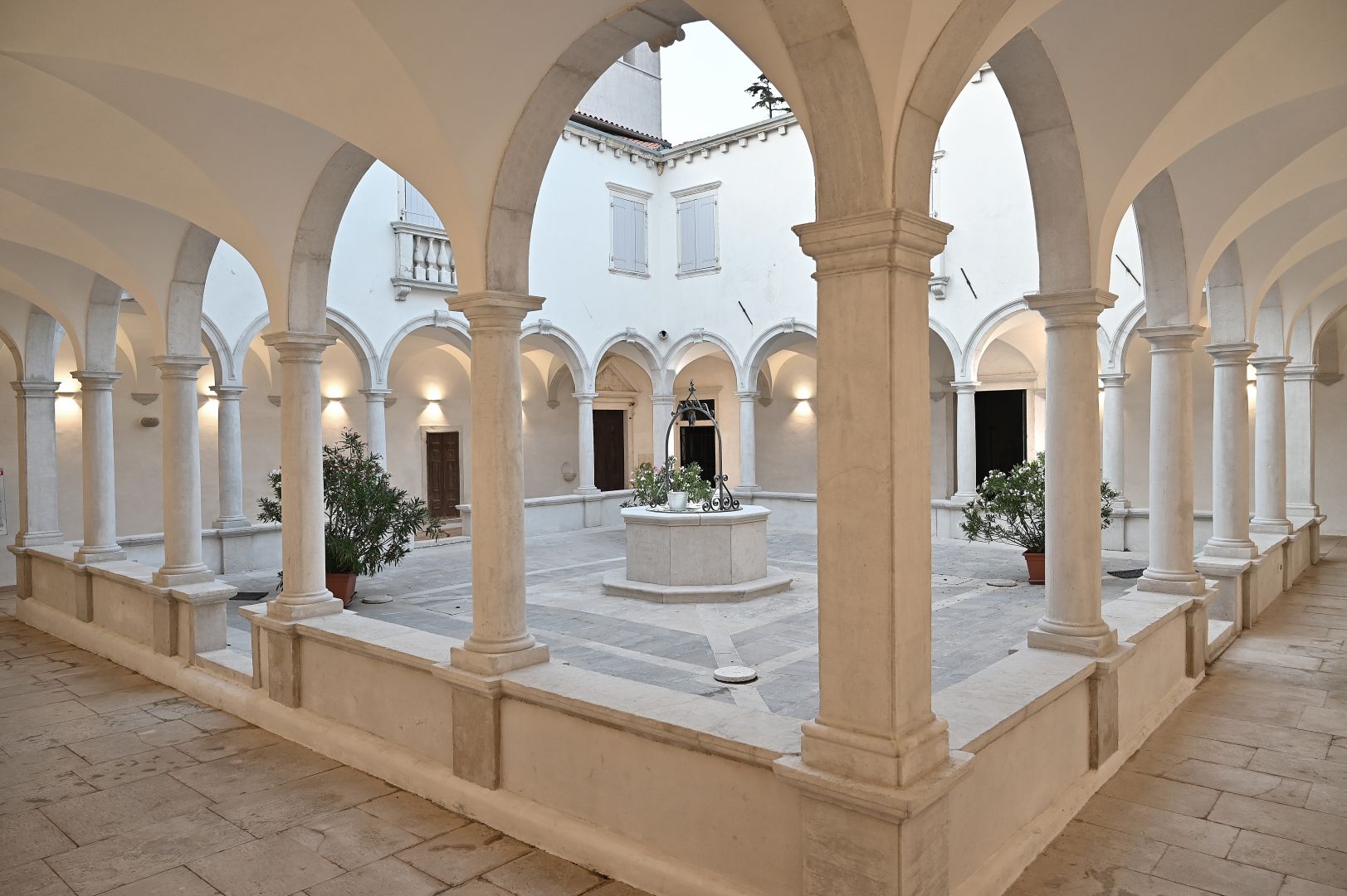
Minorite Monastery
Today, the monastery’s cloister serves as a venue for numerous cultural events, such as the Tartini Festival and the Piran Music Evenings.

Civic Gallery
In both local and European art circles, it holds an important role in showcasing contemporary art.
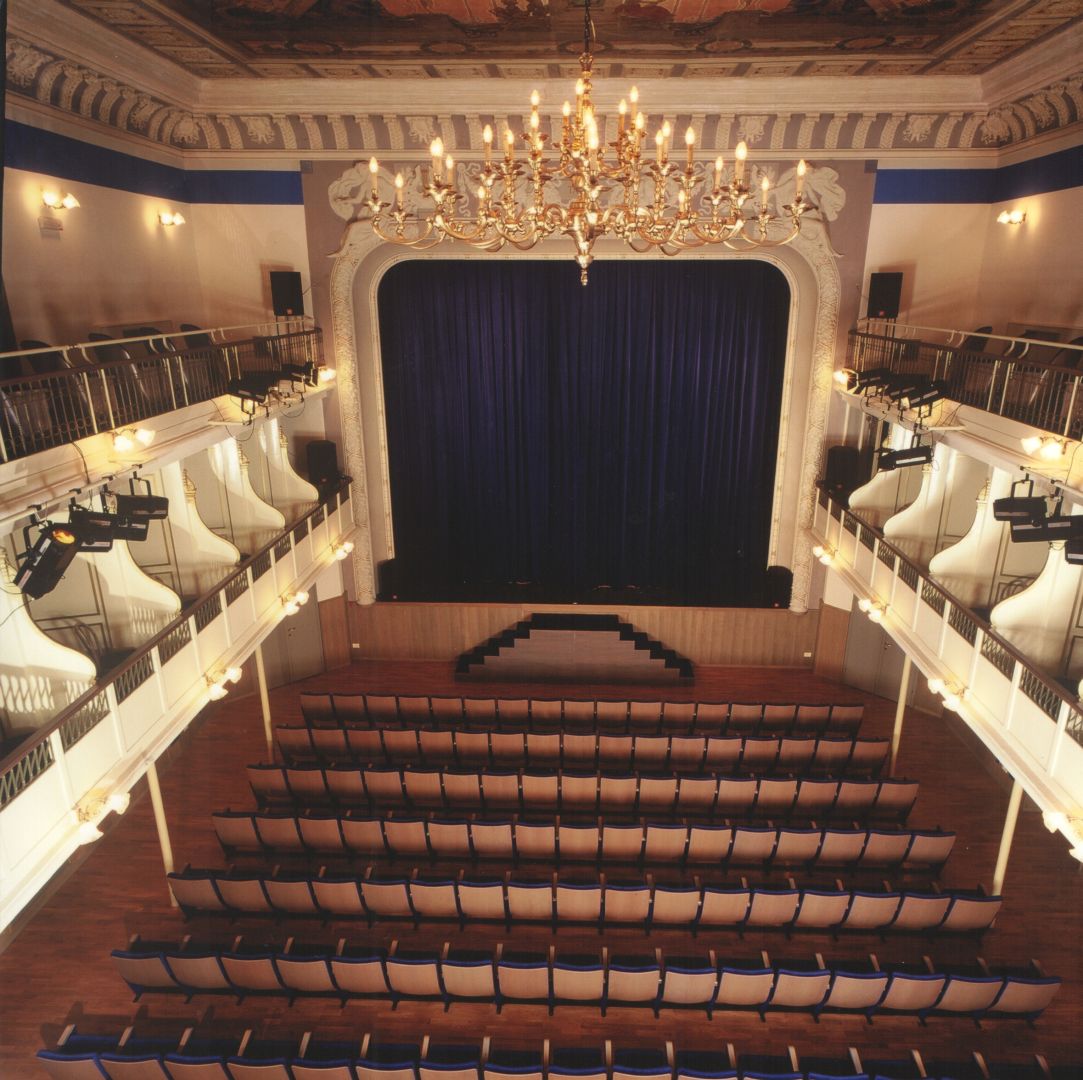
Tartini Theatre
Tartini Theatre is a stunning example of fin-de-siècle artistry, combining Art Nouveau historicism from the early 20th century. It was designed by Trieste-based architect Giacomo Zammattio, with the interior design entrusted to Trieste painter Napoleon Cozzi, who had previously contributed to the design of the Politeama Rossetti Theatre in Trieste.
The theatre is suitable for concerts, theatrical performances, recitations, multimedia shows, symposiums, conferences, and more. By removing the seating, it can also host dance events, receptions, and gala dinners.
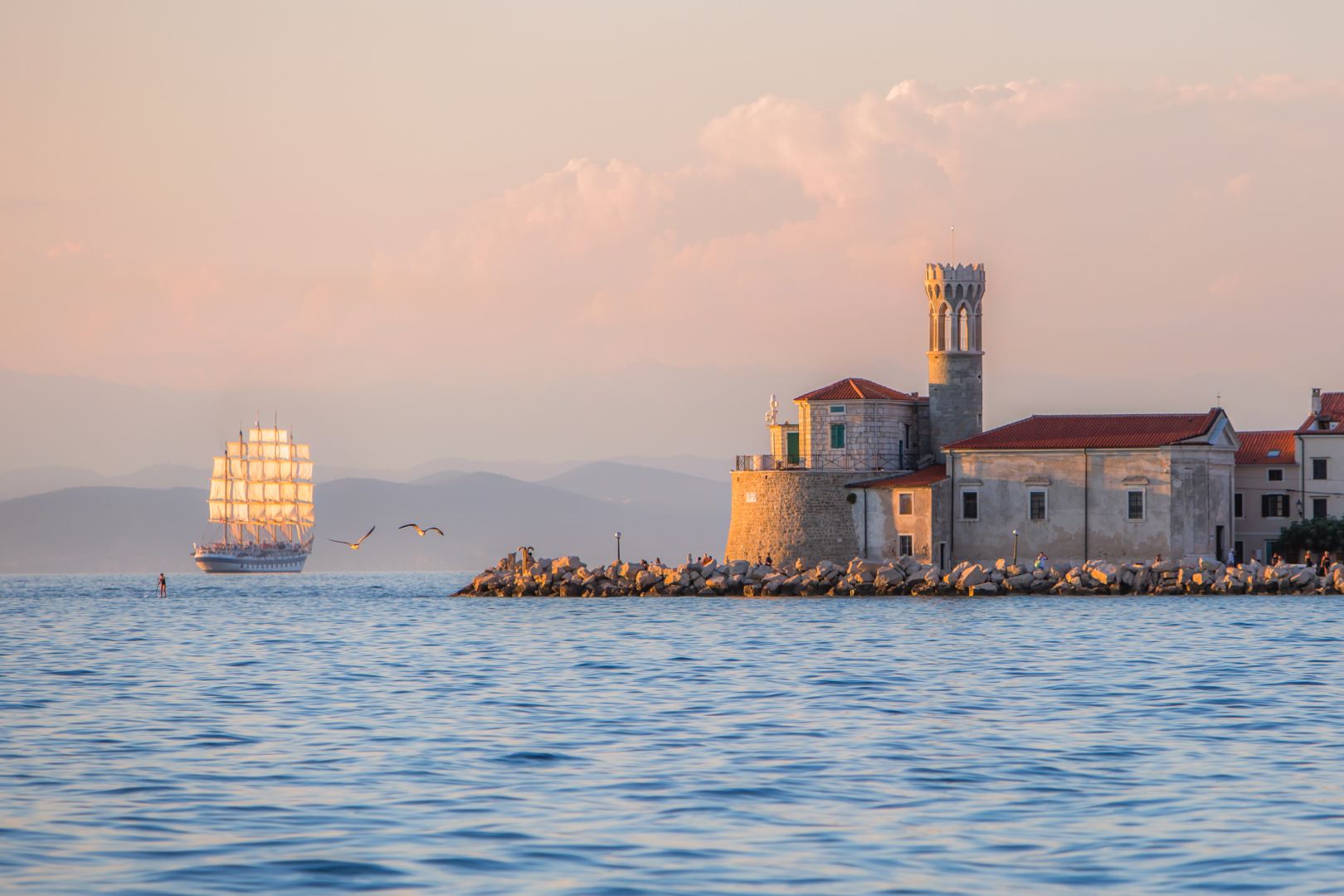
Lighthouse at Punta
The Lighthouse at Punta, named after the legend behind the name of Piran, originates from the town’s rich history. According to the legend, the name Piran is linked to the Greek word “pyros”, meaning fire or light.
It is said that in ancient times, a lighthouse was built in this area to help sailors and merchants navigate safely at sea. The Lighthouse at Punta thus serves as a symbol of safety and guidance, long associated with Piran’s maritime tradition.
